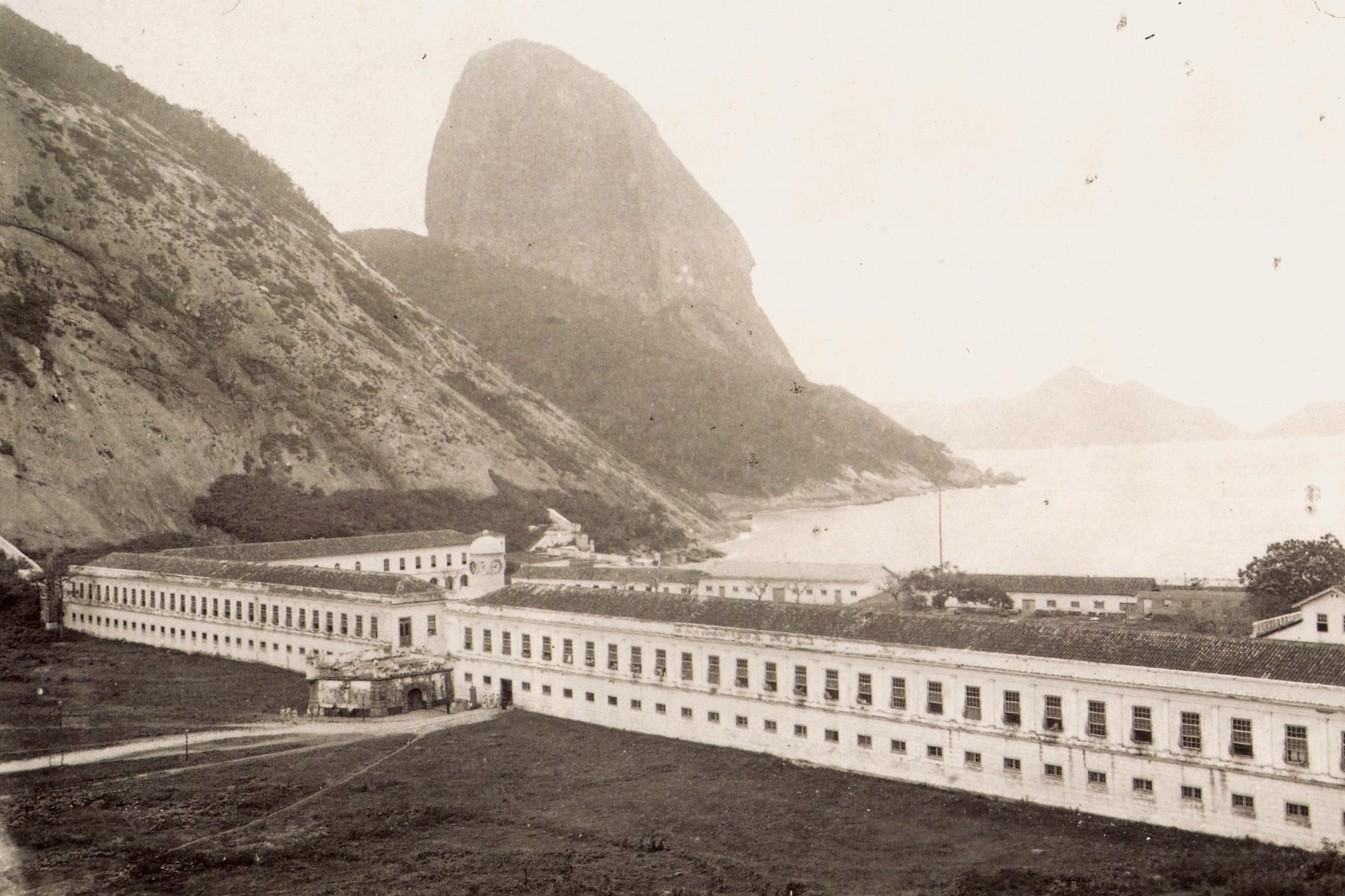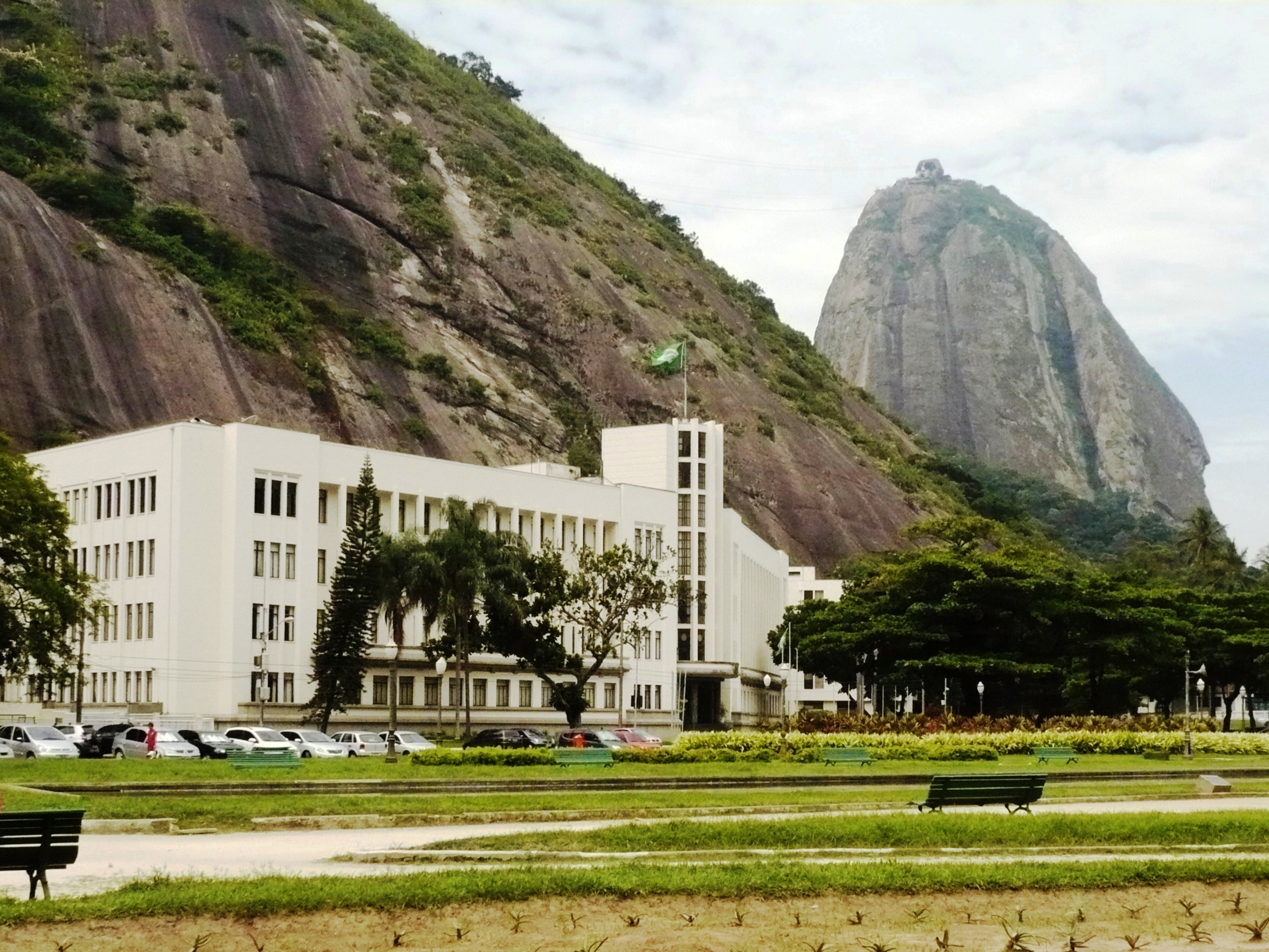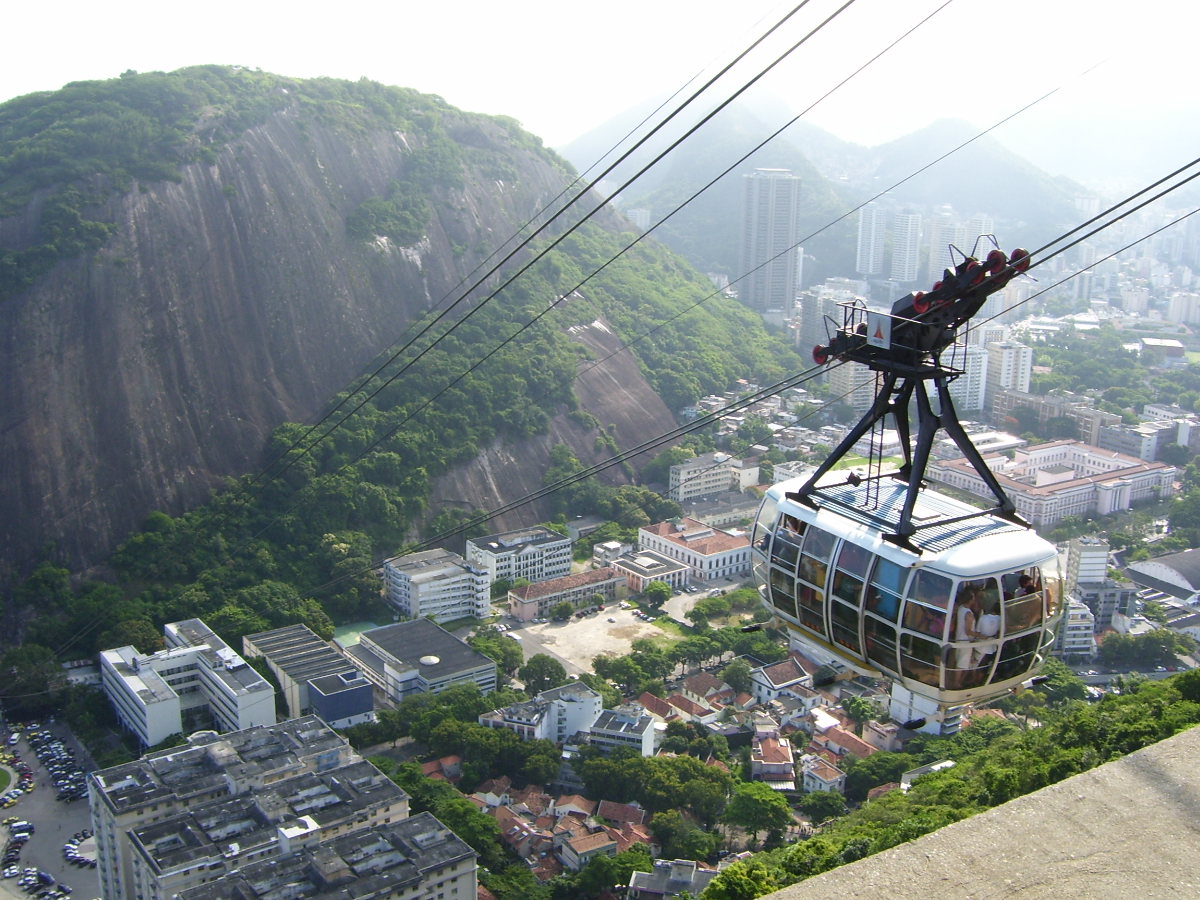Urca on:
[Wikipedia]
[Google]
[Amazon]
Urca is a residential neighborhood in

 Building space in Rio is restricted by the city's geography, which presents physical barriers to urban expansion. The notion of filling in part of the shallow bay around the Morro Vermelho and building a neighborhood on it was mooted periodically in the nineteenth century, and in the 1880s a development company was formed for the purpose, Urbanização Carioca. It has been suggested that the company's acronym, Urca, gave the neighbourhood its name. However, some historians contest this, identifying the name Urca already stamped in 18th century maps.Thiesen, I. (1998). ''Urca, fragmentos discursivos''. UniRio. "Urca", in old Portuguese tradition, designates a small and large cargo ship. Legal wrangles over financing and land titles delayed work for a generation, but the landfill began shortly after the conclusion of
Building space in Rio is restricted by the city's geography, which presents physical barriers to urban expansion. The notion of filling in part of the shallow bay around the Morro Vermelho and building a neighborhood on it was mooted periodically in the nineteenth century, and in the 1880s a development company was formed for the purpose, Urbanização Carioca. It has been suggested that the company's acronym, Urca, gave the neighbourhood its name. However, some historians contest this, identifying the name Urca already stamped in 18th century maps.Thiesen, I. (1998). ''Urca, fragmentos discursivos''. UniRio. "Urca", in old Portuguese tradition, designates a small and large cargo ship. Legal wrangles over financing and land titles delayed work for a generation, but the landfill began shortly after the conclusion of 

 Photos of the area in the 1930s show lots divided up, a low sea wall, individual houses and the trees so characteristic of the area now as saplings. The developers of Urca divided up the neighbourhood into lots and sold them to small investors, many of them recent European immigrants, especially Portuguese, of relatively modest means – the richer middle class headed for the more glamorous neighbourhoods of Copacabana and Leme, on the other side of Praia Vermelha. The heavy military presence around Urca in the coup-prone 1920s was also a disincentive for those with money to move into the area. Many of the present inhabitants of Urca are the descendants of families who bought houses or plots when the area was originally developed.
Most of Urca's residential houses date from the late 1920s to the late 1940s and are a portfolio of house styles popular at the time: art deco houses and apartment buildings, the faux Spanish colonial style (locally called Manuelino style after the 16th-century Portuguese king Manuel I) and mock Tudor houses. The seafront Avenida Luis Alves has a number of modest apartment buildings, most from the 1950s and 1960s, but to a far lesser extent than any other neighbourhood in the ''Zona Sul''. The commercial Rua Marechal Cantuária which leads traffic into the heart of Urca is the only street to have suffered significant redevelopment, but even then at a low level and very little since the 1960s. It is much used by filmmakers and ''novela'' producers looking for period settings.
The casino flourished and was a fixture of Rio's social scene in the prewar and immediate postwar period. Singer
Photos of the area in the 1930s show lots divided up, a low sea wall, individual houses and the trees so characteristic of the area now as saplings. The developers of Urca divided up the neighbourhood into lots and sold them to small investors, many of them recent European immigrants, especially Portuguese, of relatively modest means – the richer middle class headed for the more glamorous neighbourhoods of Copacabana and Leme, on the other side of Praia Vermelha. The heavy military presence around Urca in the coup-prone 1920s was also a disincentive for those with money to move into the area. Many of the present inhabitants of Urca are the descendants of families who bought houses or plots when the area was originally developed.
Most of Urca's residential houses date from the late 1920s to the late 1940s and are a portfolio of house styles popular at the time: art deco houses and apartment buildings, the faux Spanish colonial style (locally called Manuelino style after the 16th-century Portuguese king Manuel I) and mock Tudor houses. The seafront Avenida Luis Alves has a number of modest apartment buildings, most from the 1950s and 1960s, but to a far lesser extent than any other neighbourhood in the ''Zona Sul''. The commercial Rua Marechal Cantuária which leads traffic into the heart of Urca is the only street to have suffered significant redevelopment, but even then at a low level and very little since the 1960s. It is much used by filmmakers and ''novela'' producers looking for period settings.
The casino flourished and was a fixture of Rio's social scene in the prewar and immediate postwar period. Singer
Rio de Janeiro
Rio de Janeiro, or simply Rio, is the capital of the Rio de Janeiro (state), state of Rio de Janeiro. It is the List of cities in Brazil by population, second-most-populous city in Brazil (after São Paulo) and the Largest cities in the America ...
, Brazil
Brazil, officially the Federative Republic of Brazil, is the largest country in South America. It is the world's List of countries and dependencies by area, fifth-largest country by area and the List of countries and dependencies by population ...
, with a population of nearly 7,000. Although most of the neighborhood dates from the 1920s, parts of it are much older. What is now called the Forte São João, a military base at the foot of the Sugarloaf Mountain
Sugarloaf Mountain (, ) is a peak situated in Rio de Janeiro, Brazil, on a peninsula at the mouth of Guanabara Bay. Rising above the harbor, the peak is named for its resemblance to the traditional shape of concentrated refined loaf suga ...
, is where the first Portuguese settlement in Rio was founded by Estácio de Sá
Estácio de Sá (1520 – 20 February 1567) was a Portuguese soldier and officer. Sá travelled to the colony of Brazil on the orders of the Portuguese crown to wage war on the French colonists commanded by Nicolas Durand de Villegaignon. The ...
on March 1, 1565. The French had arrived 12 years earlier and founded a settlement, called France Antarctique
France Antarctique (formerly also spelled ''France antartique'') was a French colony in Rio de Janeiro, in modern-day Brazil, which existed between 1555 and 1567, and had control over the coast from Rio de Janeiro to Cabo Frio. The colony quickl ...
, close to what is now Flamengo and Gloria districts, in downtown Rio. The French, riven by internal disputes between Catholics and Protestants, were massacred by the Portuguese and their Indian allies in attacks organised from here, expelling them from the nearby Villegagnon Island
Villegagnon Island (former Serigipe Island—original Portuguese: ''Ilha de Villegagnon''—also known in English as: Villegaignon Island, Island of Villegagnon or Island of Villegaignon) is located near the mouth of the large Guanabara Bay, in t ...
(named after the French commander Nicolas Durand de Villegaignon). The street now called Rua São Sebastião, in Urca, which leads from behind the fort to the Urca casino, was originally a trail from the Portuguese fort skirting the edge of the sea to the mainland along the peninsula that houses the Sugar Loaf and a smaller hill, the Morro da Urca. Rua São Sebastião thus has some claim to be the oldest street in Rio.
History

 Building space in Rio is restricted by the city's geography, which presents physical barriers to urban expansion. The notion of filling in part of the shallow bay around the Morro Vermelho and building a neighborhood on it was mooted periodically in the nineteenth century, and in the 1880s a development company was formed for the purpose, Urbanização Carioca. It has been suggested that the company's acronym, Urca, gave the neighbourhood its name. However, some historians contest this, identifying the name Urca already stamped in 18th century maps.Thiesen, I. (1998). ''Urca, fragmentos discursivos''. UniRio. "Urca", in old Portuguese tradition, designates a small and large cargo ship. Legal wrangles over financing and land titles delayed work for a generation, but the landfill began shortly after the conclusion of
Building space in Rio is restricted by the city's geography, which presents physical barriers to urban expansion. The notion of filling in part of the shallow bay around the Morro Vermelho and building a neighborhood on it was mooted periodically in the nineteenth century, and in the 1880s a development company was formed for the purpose, Urbanização Carioca. It has been suggested that the company's acronym, Urca, gave the neighbourhood its name. However, some historians contest this, identifying the name Urca already stamped in 18th century maps.Thiesen, I. (1998). ''Urca, fragmentos discursivos''. UniRio. "Urca", in old Portuguese tradition, designates a small and large cargo ship. Legal wrangles over financing and land titles delayed work for a generation, but the landfill began shortly after the conclusion of World War I
World War I or the First World War (28 July 1914 – 11 November 1918), also known as the Great War, was a World war, global conflict between two coalitions: the Allies of World War I, Allies (or Entente) and the Central Powers. Fighting to ...
and the first houses were built in 1922. The centrepiece of the new neighbourhood was a cassino, originally conceived as a competitor to the newly installed cassino in the luxury Copacabana Palace hotel, in those days a rather longer and more inconvenient haul from downtown Rio.


Carmen Miranda
Maria do Carmo Miranda da Cunha (9 February 1909 – 5 August 1955), known professionally as Carmen Miranda (), was a Portuguese-born Brazilian singer, dancer, and actress. Nicknamed "The Brazilian Bombshell", she was known for her signature ...
was discovered by a Hollywood producer visiting the casino in 1938, where she was performing. She rented a small house on Rua São Sebastião, now indicated by a plaque on the wall which is the only one in Rio commemorating a famous person's house. The casino also played a minor role in the history of astrophysics
Astrophysics is a science that employs the methods and principles of physics and chemistry in the study of astronomical objects and phenomena. As one of the founders of the discipline, James Keeler, said, astrophysics "seeks to ascertain the ...
. Two scientists in the casino, discussing a model explaining neutrino emission patterns in the cooling of stars, named it after the casino when they noticed how rapidly money, like energy pulsing from a dying star, disappeared from the roulette table.
In 1946 a federal ban on casinos put the Cassino da Urca out of business. The building was later acquired by TV Tupí, a television station owned by Assis Chateaubriand
Francisco de Assis Chateaubriand Bandeira de Melo (pronounced ), also nicknamed Chatô (October 4, 1892 – April 4, 1968), was a Brazilian lawyer, journalist, politician and diplomat. He was founder and director of the prominent media conglomer ...
, the first Brazilian media mogul. TV Tupi built a new frontage for the building onto the beach, increasing its internal space and turning the curved 1930s exterior into a plain right-angled building. The TV Tupi studio was used for ''Chacrinha
José Abelardo Barbosa de Medeiros (September 30, 1917 – June 30, 1988), better known as Chacrinha (), was a Brazilian comedian, radio and TV personality. His career was at its peak from 1950 to 1980. He was author of a famous Brazilian phr ...
'', a variety program which ran on weekend afternoons from the 1960s to the 1980s, with an enormous national audience. A slot on ''Chacrinha'' was highly sought after for upcoming musicians, dancers and actors. The studios closed in the late 1980s, and the casino was left abandoned until 2008. It is currently being renovated to serve as a design institute.
Forte São João is a typical early seventeenth-century Portuguese fort, like many others around the country, with several original cannons. A number of Art Deco
Art Deco, short for the French (), is a style of visual arts, architecture, and product design that first Art Deco in Paris, appeared in Paris in the 1910s just before World War I and flourished in the United States and Europe during the 1920 ...
buildings are nearby, including a gymnasium built in 1932. A football field next to the gymnasium was used as a training ground by the England squad in the 2014 World Cup.
See also
* Escola de Comando e Estado-Maior do Exército (Brazil) - Brazilian Army Command and Staff College * Military Institute of Engineering * Pista Cláudio Coutinho – local walking trailReferences
{{Authority control Neighbourhoods in Rio de Janeiro (city) Guanabara Bay